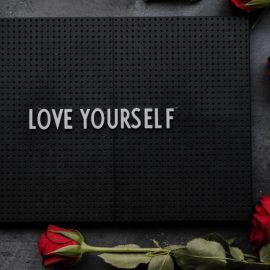
This is a free excerpt from one of Shortform’s Articles. We give you all the important information you need to know about current events and more.
Don't miss out on the whole story. Sign up for a free trial here .
Wondering how to keep your New Year’s resolutions? Why is it difficult to keep resolutions?
Scientists say that if you struggle to keep your New Year’s resolutions, you might just be thinking about them wrong. To fulfill your resolutions, they say not to make resolutions at all. Instead, try setting intentions.
Read on to learn tips for how to keep your New Year’s resolutions by setting intentions.
Keeping Your New Year’s Resolutions
Every year after the excesses of the holiday season, we make promises to do better in the coming year. And every year, many of us fail to keep those promises. Why do we make New Year’s resolutions when they’re usually so hard to maintain? Are they an exercise in futility that should just be abandoned? The science says maybe not—we might just need to change the way we think about our resolutions. In this article, we’ll discuss how to keep your New Year’s resolutions by making the shift to setting intentions instead.
Set Intentions, Not Resolutions
While a goal is a milestone you hope to reach at some point in the future, an intention is a decision to be a certain way or a quality you want to cultivate in yourself. Wellness coach Naz Beheshti says that focusing on a goal as an endpoint can set you up for failure, but setting an intention puts the emphasis more on the effort and process, not just the results. This makes intentions more forgiving because they’re always rooted in the present. At any moment, you can choose to stop and mindfully set an intention. She advises having a goal in mind but focusing more on your intentions regularly as you work toward that goal.
For an example of how to keep your New Year’s resolution by using intentions, if your goal is to lose 20 pounds, you don’t need to think about that daily. Each day you focus only on the intention to try to cultivate the mindset for making healthier choices. You can keep coming back to that intention as often as you need to, and remind yourself that as long as your intention is genuine, that’s good enough. Your behavior will follow in time, even if it doesn’t happen right away.
This advice aligns with scientific research that suggests that we do better at achieving goals when we break them down into smaller chunks, as well as the ample research that shows the psychological benefits of mindfulness.
Make a Specific Plan
Self-help author James Clear, in his bestselling book Atomic Habits, encourages adopting a specific kind of intention-setting, called “implementation intentions,” for developing new habits. Putting implementation intentions into practice involves making a specific plan about exactly what you will do in the process of working toward your goal.
Clear cites a 2001 study in which three groups of participants worked toward the goal of increasing their exercise. Group 1 was just asked to track their exercise habits. Group 2 was given some motivational reading to do, and then asked to track their exercise habits. Group 3 was given the same motivational reading, and asked to develop a concrete plan for their daily workouts, describing how many minutes they would spend exercising on specific days, at a specific time and place.
In Groups 1 and 2, 35-38% of participants exercised at least once per week. But in Group 3, 91% of participants exercised at least once per week. This vast difference in outcomes suggests that it’s not motivation we lack, but a clear, concrete plan of action.
Clear says you can apply implementation intentions to any habit you’re trying to develop. For example, “I will practice the guitar for 20 minutes, every afternoon at 3 p.m., on the couch.” If you’re trying to break a habit, you’ll need to reframe the intention by choosing something you’re going to replace that habit with. Let’s take a look at how that works.
TITLE: Atomic Habits
AUTHOR: James Clear
TIME: 54
READS: 1490.5
IMG_URL: https://www.shortform.com/blog/wp-content/uploads/2020/11/atomic-habits-cover.png
BOOK_SUMMARYURL: atomic-habits-summary-james-clear
AMZN_ID: XYZ
Approach, Don’t Avoid
Psychologists distinguish between two types of goals: avoidance and approach goals. Avoidance goals are aimed at stopping a negative behavior, such as quitting smoking. Approach goals are aimed at starting or increasing a positive behavior, such as exercising more. In studies, participants were about 25% more likely to meet approach goals than avoidance goals. This may be because a resolution that intends to “fix” something focuses your mind negatively on a problem, while intention-setting for an approach goal focuses on a positive desire for your life.
So one bit of advice for keeping your New Year’s resolutions and making them more successful is to set approach goals, or to reframe your avoidance goals to make them into approach goals. You’d do this by replacing the unhealthy thing you’re trying to eliminate with a new, healthy thing. For example, instead of making a resolution to quit smoking, you might set the specific intention that every time you crave a cigarette you’ll eat a carrot stick instead. Doing this creates a clear and specific intention that is a thing you will do, and it turns your unhealthy craving into a trigger to perform the healthy behavior.
Finally, if you give in to temptation and have that piece of cake, or you have a lazy day and skip your workout, resist thinking about it as “failure” and simply come back to your intentions. Simply shifting the way you think about time may be key to allowing yourself endless fresh starts.
The Fresh-Start Effect
Psychologist Katy Milkman says we tend to think of periods in our lives as similar to chapters in a book. This means whenever there’s something marking a division in time, it gives us the sense that we get to start anew, with a clean slate. Psychologists call this the “fresh-start effect,” and say it allows us to distance ourselves from our past mistakes or regrets and feel like we can do better in the future. This psychological mechanism may be at the heart of why for thousands of years humans have been making promises to the gods, their loved ones, and to themselves at particular temporal turning points.
When we factor this in with the other research on how we develop better habits through intention-setting, we can create a more efficient plan for sticking to our resolutions, by simply remembering that we have constant “temporal landmarks” available to us. The New Year isn’t our only opportunity to set resolutions or aim for a clean slate. The beginning of every month, week, and day is another opportunity.

Want to fast-track your learning? With Shortform, you’ll gain insights you won't find anywhere else .
Here's what you’ll get when you sign up for Shortform :
- Complicated ideas explained in simple and concise ways
- Smart analysis that connects what you’re reading to other key concepts
- Writing with zero fluff because we know how important your time is






